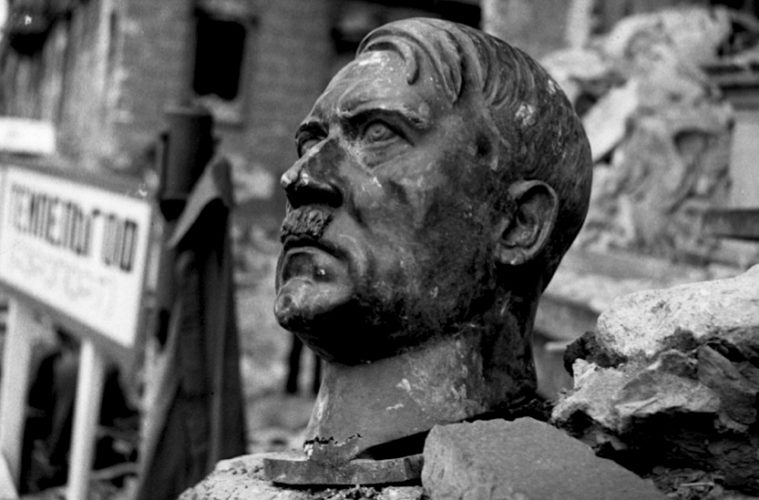In 1985, Don DeLillo’s classic novel White Noise centered on a vexed college professor who had pioneered the field of Hitler Studies. It read like satire, but it wasn’t, really. Sebastian Haffner’s book The Meaning of Hitler had been in print for a decade already, and the fecund realm of reflective study has been expanding ever since. This corpus may propagate infinitely, for the simple reason that there’s no final “understanding” of Hitler as a personality or as cultural signifier, and no real way to reduce the Holocaust to any sort of morally graspable interpretation. He and it will always seem incomprehensible to us, and by “us” I don’t mean the many, many millions of Americans who identify as white supremacists/separatists.
Which is essentially the battleground that Michael Tucker and Petra Epperlein’s new documentary launches into – the 21st-century reemergence of what we thought, or hoped, was ancient history. Structured to follow the largely out-of-print book by Haffner (a nom de plume for the far more memorably named Raimund Pretzel), the film makes a sincere effort at plumbing its titular subject, interviewing scholars, psychiatrists, Nazi hunters, and novelists (including Martin Amis, Francine Prose, and historian Saul Friedlander), and traveling through northern Europe for Hitler-was-here locations (some historically marked, many not).
“Meaning” is elusive, of course, and perhaps beside the point, as Tucker and Epperlein quickly frame up Haffner’s historical ruminations as prologue for contemporary Hitlerism, and its context within the European refugee crisis. Along the way, they check in with David Irving, the notorious Holocaust denier/ex-con, seen on a walking tour, dismissing someone’s inquiry (“forget about Auschwitz, it’s unimportant”). There’s also a microphone expert who maintains that Hitler’s oratorical success was founded upon the improvement of mic technology in the late ‘20s, allowing him more expressive power in the same way that the Beatles and Jimi Hendrix got decades later.
It gets rangy from there. We even see one of Hitler’s watercolors, which isn’t at all bad, in a magazine-illustration kind of way. Unfortunately, the filmmakers seem to be under the impression that their audience possesses chipmunk-sized attention spans, so the doc is packed with glib and hyperbolic gimmickry: frame-filling captions (“SAVIOR,” “ENTHUSIASM”), jokey movie clips, constant on-screen clapboarding, driving shots with Hitler’s-Benz-insignia looming in the foreground, etc.
Taking the subject seriously would be, you’d think, high on the agenda, and the movie does get grave when it intersects with contemporary neo-Nazi and Nazi-ish marches. But the treatment is superficial, touching on a half-dozen mega-subjects that could each use their own film, and the upshot is a gloss that could, and maybe should, send you down a Wikipedia gopher hole. But all told, the weaker formal aspects of The Meaning of Hitler might just be due to the filmmakers aiming at a specific audience– viewers under 30 for whom Hitler is in fact ancient history, and who may be on the verge of not remembering, not knowing, and not caring.
Advertising disclosure: We may receive compensation for some of the links in our stories. Thank you for supporting LA Weekly and our advertisers.

